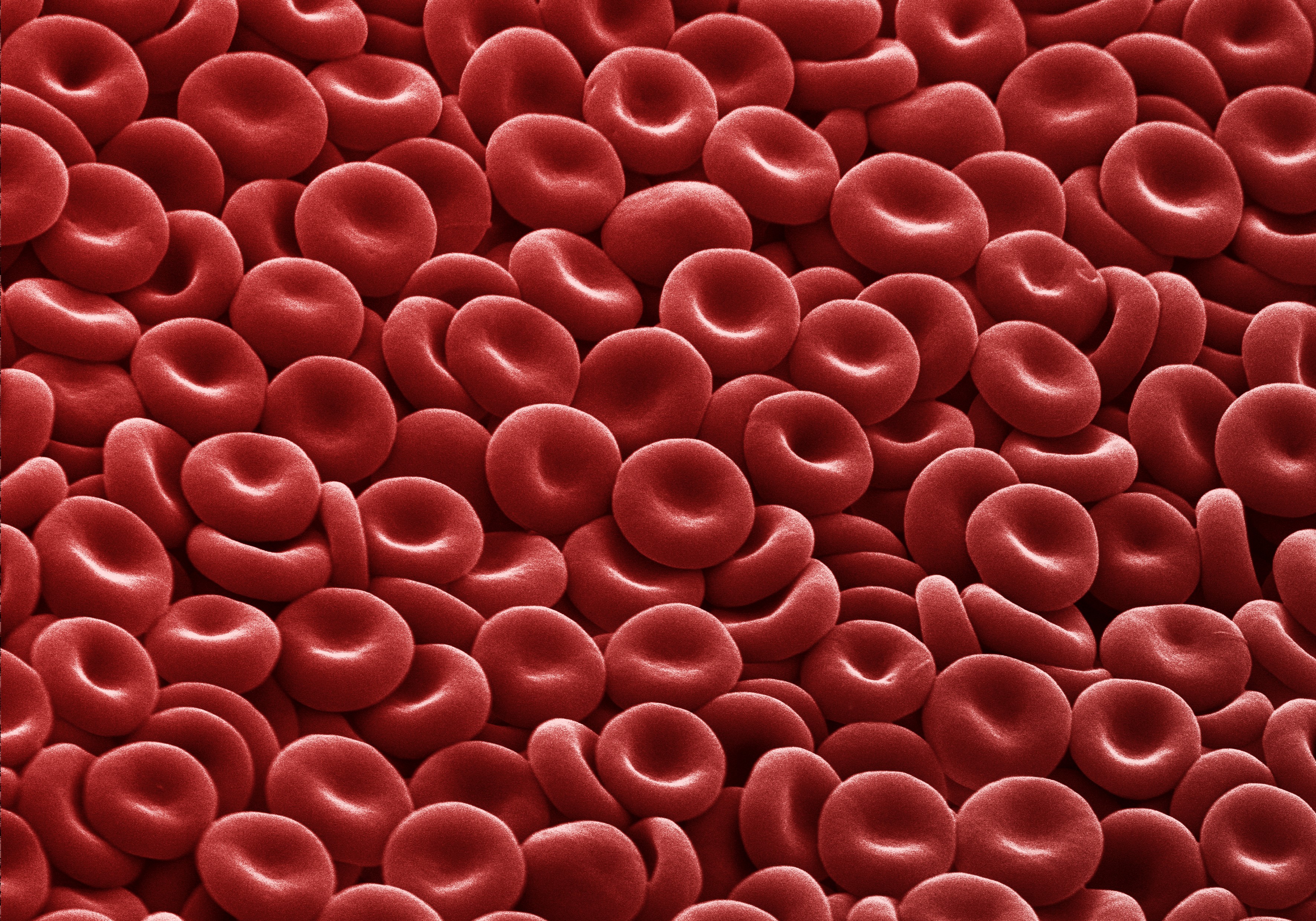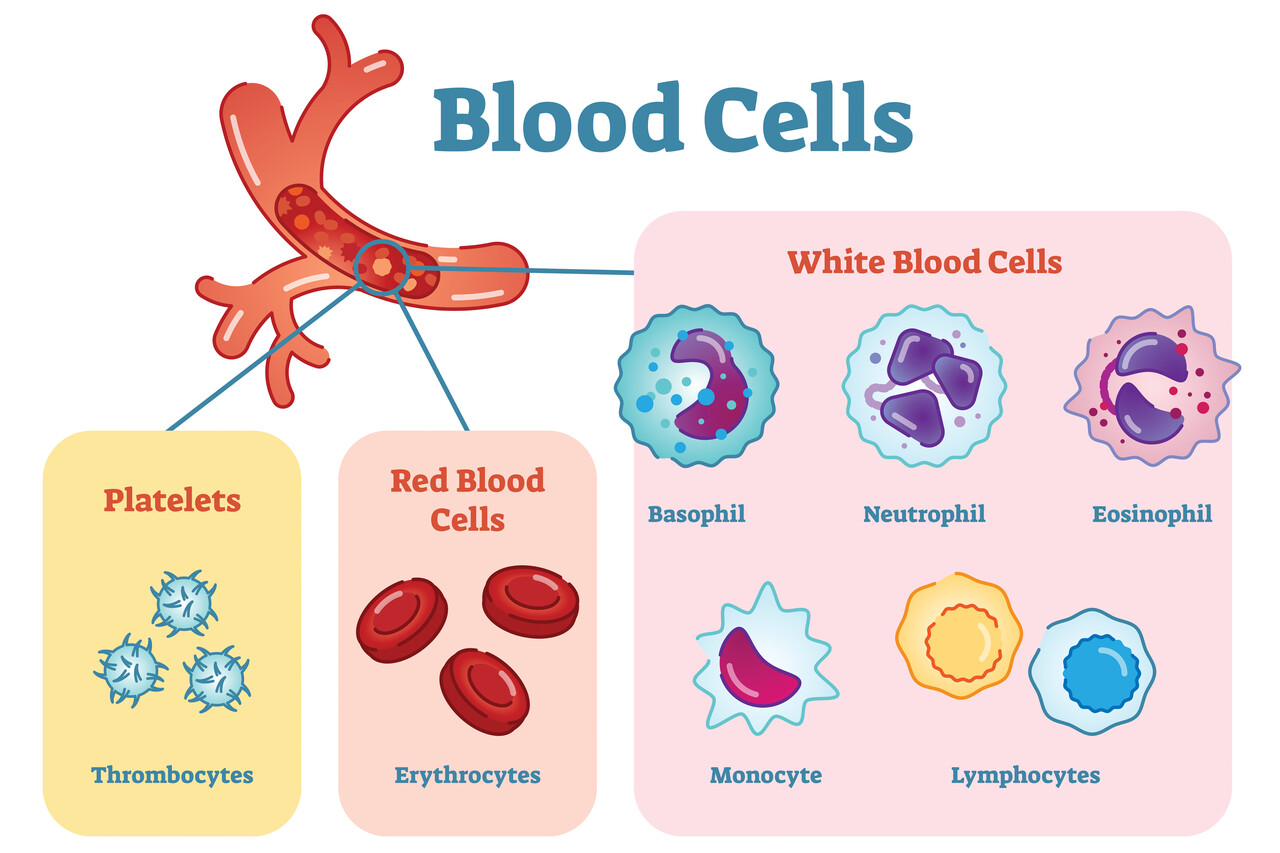
Erythrocytes, also known as red blood cells, are an essential component of human blood, performing vitally important functions. They are characterized by their unique, disk-shaped structure with a central indentation, which increases their surface area, facilitating the exchange of oxygen and carbon dioxide. Erythrocytes in adults are atypical cells because they lack a nucleus, allowing them to carry more hemoglobin – a complex protein that binds with oxygen and gives erythrocytes their characteristic red color.
What are the properties and structure of erythrocytes?
Erythrocytes, or red blood cells, are among the most important elements in the human circulatory system, characterized by unique properties and structure that determine their essential role in the body. Their primary function is the transportation of oxygen and carbon dioxide, but their structure is special and adapted to this function.
Firstly, the shape of erythrocytes is distinctive. Erythrocytes are characterized by a disk shape with a central indentation. This shape provides a larger surface area compared to their volume, which increases their efficiency in the exchange of oxygen and carbon dioxide. Additionally, due to this shape, erythrocytes can easily deform while passing through the narrowest blood vessels, such as capillaries.
Another important aspect of erythrocytes is their structure. Adult human erythrocytes lack a nucleus, which is unusual for most other cells. This absence of a nucleus allows them to carry more hemoglobin – the protein responsible for oxygen transport. Without a nucleus, erythrocytes also lack other organelles, such as mitochondria or the endoplasmic reticulum, providing even more space for hemoglobin.
The hemoglobin present in erythrocytes is the main component responsible for binding oxygen in the lungs and releasing it in tissues where oxygen concentration is lower. Hemoglobin also binds to carbon dioxide, which is brought back to the lungs and exhaled. The ability of hemoglobin to bind with oxygen and carbon dioxide is fundamental to the transport function of erythrocytes.
The lifespan of erythrocytes is about 120 days. Erythrocytes are formed in the bone marrow, especially in the pelvic, chest, and limb areas. Old or damaged erythrocytes are destroyed in the liver and spleen, where their components are recycled and used for the production of new erythrocytes. This cycle is continuous and important to maintain a steady and healthy number of erythrocytes in the body.
The unique structure and properties of erythrocytes are essential for maintaining efficient oxygen and carbon dioxide transport in the body, ensuring that all cells and tissues receive the necessary oxygen and metabolic products are removed. Their effective functioning is critical to the health and function of the entire body.

Erythrocytes and their role in health
The role of erythrocytes, or red blood cells, in human health is invaluable and multifaceted. Erythrocytes are essential for several vital processes, including oxygen transport, maintaining acid-base balance, and even immune system functions.
- The primary function of erythrocytes is to transport oxygen from the lungs to body tissues and return carbon dioxide back to the lungs. This process is essential for the metabolism and functioning of all cells. Erythrocytes carry hemoglobin, a complex protein that binds with oxygen in the lungs, where its concentration is high, and transfers it to tissues where the oxygen level is lower. Conversely, they assist in transporting carbon dioxide, a byproduct of metabolism, from tissues back to the lungs to be expelled from the body.
- In addition to oxygen transport, erythrocytes are also important in maintaining the proper acid-base balance in the body. They participate in regulating the blood's pH level by transporting carbon dioxide and converting it into bicarbonate ions in the bloodstream. This function is necessary, as even small changes in blood pH can have serious consequences for body functions.
- Although less widely known, erythrocytes also play a certain role in the immune system. They can attach to various immune complexes and help remove harmful substances from the circulatory system. Additionally, they act as signaling elements, helping to regulate the immune system's response.
Disorders
Erythrocyte disorders encompass a broad and varied field of medicine, involving various conditions that affect the number, shape, size, function, or ability of red blood cells (erythrocytes) to efficiently transport oxygen and other substances. These disorders can cause a range of complications and have a significant impact on human health.
Anemia
One of the most common types of erythrocyte disorders is anemia, characterized by a low number of erythrocytes or an insufficient amount of hemoglobin in the blood. This can lead to inadequate oxygen transport to tissues, causing symptoms such as fatigue, weakness, pallor, and breathing difficulties.
Anemia can be caused by various reasons:
- Iron deficiency anemia: This occurs due to an insufficient amount of iron, which is necessary for hemoglobin production.
- Vitamin B12 or folic acid deficiency anemia: A deficiency in these substances can disrupt the production of erythrocytes.
- Aplastic anemia: This is a rare condition where the bone marrow inadequately produces new blood cells.
- Hemolytic anemia: This occurs when erythrocytes are destroyed faster than they are produced, which can be due to inherited or acquired reasons.
Polycythemia
Polycythemia is a condition opposite to anemia, characterized by an excessively high number of red blood cells. This can increase blood viscosity, causing a slowdown in blood circulation and increasing the risk of thrombosis.
Polycythemia can be:
- Polycythemia vera: This is a chronic blood disease characterized by uncontrolled erythrocyte production.
- Secondary polycythemia: This occurs due to other reasons, such as long-term oxygen deficiency due to smoking.
Erythrocyte function disorders
- Methemoglobinemia: This is a rare condition where hemoglobin loses the ability to effectively transport oxygen due to improper oxidation.
- G6PD deficiency: This is a deficiency of an enzyme necessary to protect erythrocytes from oxidative damage.

It can be said that the role of erythrocytes in human health is critical – they not only transport vitally important oxygen but also maintain homeostasis, contribute to immune system function, and ensure that our organs and tissues operate optimally. Without proper erythrocyte functioning, many vital processes in the body would be disrupted, highlighting their invaluable importance to our overall health.
Information sources:
- "Harrison's Principles of Internal Medicine"
- "The American Journal of Hematology"
- "Mayo Clinic".
# eritrocitai






